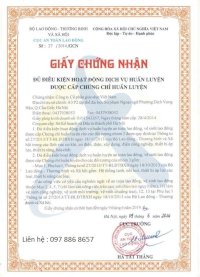Study On Orthographic Markers At The Beginnings Of Words
Liên hệ
Danang
Phonological categorization can be applied to Australian English in such a way that the disyllabic verbs that have iambic stress and the nouns that have trochaic stress are separated from one another. The purpose of this study is to investigate several questions, the first of which is whether or not monolingual native English speakers (NS) employ orthographic indicators at the beginnings of words to assign lexical stress. (2) Assuming that this is the case, is it possible for the grammatical context in which words are placed to lessen the reliance that NS has on orthographic markers? (3) Does the shown sensitivity of non-native bilingual speakers of English (NNS) to orthographic signals of lexical stress and/or grammatical context differ from that of native speakers of English (NS)? The investigation of 71 native speakers and fifty non-native speakers using the Boston Naming Test and stress assignment tasks both in context and in isolation found that there may be expectations that spelling signals grammatical category at the beginning of disyllabic words. When asked to assign stress, NS were shown to be sensitive to the manifestation of the signals present in non-words. This was discovered when the NS were given the task. When it comes to correctly assigning stress patterns, the reliability of orthography suffers when grammatical context is taken into consideration. In addition to grammatical category, the English orthography also carries signals for lexical stress, as will be shown in this study. In addition, this study will evaluate and analyse the findings of previous investigations.
Research Concerning the Orthographic Markers Found at the Beginnings of Words
Previous research that concentrated on phonological acquisition casts doubt on the concept of lexical stress assignment within the context of the use of non-words as well as words. Finding out if a word is a non-word or a word and whether it sounds like a verb or a noun depends on the positioning of orthographic markers and grammatical categories such as verbs and nouns. This is an important step in the process of determining whether the word is a verb or a noun. In the speech output of both NS and NNS speakers of Australian English, they have proven to be an influential variable of lexical stress. The disyllabic verbs and nouns in the English language are portrayed by the stress pattern that is found in the English language. The most noticeable and common patterns found in the English language are ones such as trochaic, which is used for nouns and has stress found on the first syllable, and iambic, which is used commonly for verbs and has stress found on the second syllable. Patterns such as these are used for nouns and have stress found on the first syllable (Arciuli & Cupples, 2007). Researchers in the past have run into a problem when attempting to determine if native English speakers will correctly identify the grammatical category of non-words (such as verb or noun) based on the patterns of stress that they exhibit.There has been some speculation, most notably by Arciui and Cupples (2007), that orthographic markers and grammatical category assignment are connected in some way. This association was demonstrated by Kempt et al. (2009) when he stated that proficient English readers were more likely to treat pseudowords that had noun like endings as nouns. In contrast, words with verb-like or control endings were more likely to be treated as their respective grammatical categories. Despite the fact that this study was unable to demonstrate why better reading ability, sensitivity to orthographic cues, and grammatical category shared a correlation, it did further solidify the plausibility of such a correlation as a result of their own findings and past research. There is an inherent bias in this study as a result of the selection of participants, which consisted of a majority of female university students who were in their twenties. This is the case despite the fact that attempts were taken to attain a diverse sample size and pool of participants. As a result, the findings are likely to contain some element of bias due to the lack of age and gender diversity among the participants (Kemp et al,.2009). Essay writing Services of Academic Master is providing help to world wide people in their works for increasing performance.According to previous research, the people who are considered to be skilled in NS are the ones who are aware of orthographic clues to the grammatical category as well as lexical stress that is conveyed at the beginning of a disyllabic non-word (Arciuli & Cupples, 2007). Aruicili and Cupples (2007) investigated this phenomena by testing individuals to determine whether or not they were sensitive to the orthographic markers in relation to the process of assigning their grammatical category. This is an illustration of one possible application of their findings. It was requested that the people who took part in this research carry out a stress assessment task in addition to a sentence construction task simultaneously. Fifty percent of the participants in this study were asked to carry out the stress assessment task, while the other fifty percent were asked to carry out the sentence construction task. Both of the activities consisted of nonwords that were chosen from the dictionary analysis that was carried out before to carrying out the tasks themselves. The nonwords used beginnings that are typically reserved for nouns and verbs (Arciuli & Cupples, 2007). It was discovered that non-words that were employed as nouns had a greater likelihood of having trochaic stress given to them, but iambic stress was assigned to non-words that were used as verbs (Arciuli et al., 2009). It was also suggested through the results that the individuals who took part in the construction task had the tendency to classify non-words that began in a manner similar to a noun as a noun, in addition to the fact that non-words that began in a manner similar to a verb would be categorised as a verb. This was the case even though the construction task did not ask them to do either of these things (Arciuli & Cupples, 2007). However, in the context of regular reading, the distinction between orthography and stress pattern grammatical category is still uncertain.Both Arciuli and Cupples (2007) and Davis and Kelly (1997) demonstrated that NNS were typically faster and generally more accurate at identifying words that had stress patterns that followed similar patterning of grammatical category as opposed to words that had a different uncharacteristic pattern. This was the case regardless of the grammatical category of the words.Davis and Kelly (1997) discovered that both NS and NNS were capable of analysing the stress patterns of pseudowords in addition to disyllabic verbs and nouns. This was one of the findings of their study. When the participants were asked to compose a statement using iambic and trochaic pseudo words or real words, the NNS demonstrated more accurate results than the NS. This led researchers to conclude that NNS are able to assign grammatical categories based on the stress patterns of their speech. This study had a restriction because the stimuli were provided aurally; as a result, there were no words printed down. However, this limitation was addressed and remedied in this investigation by having the stimuli written down.In light of the findings of the preceding research, the following research question was posed: To begin, I'd like to know if people who only speak English as their first language (also known as NS) utilise orthographic markers at the onset of words to indicate where the lexical stress should go. Second, if the first hypothesis is correct, is it possible for the grammatical context in which words are placed to minimise the amount of reliance that NS has on orthographic markers? Last but not least, does the shown sensitivity of non-native, bilingual speakers of English (NNS) to orthographic signals of lexical stress and/or grammatical context differ from that of native speakers (NS)?
It was proposed as a hypothesis that:
If NS use orthographic markers to assign lexical stress, they will do the following: When presented in isolation, they will assign first syllable stress (the typical nominal pattern) more frequently to non-words with "noun-like" orthographic beginnings than to non-words with "verb-like" orthographic beginnings. This is because non-words with "noun-like" orthographic beginnings are more similar to words than words with "verb-like" beginnings are.If native speakers use grammatical context to reduce their reliance on orthographic markers to lexical stress, then their preference for assigning first syllable stress to non-words with "noun-like" beginnings more often than to non-words with "verb like beginnings" will be reduced when non-words are presented in grammatical contexts that conflict with their orthography (that is, "noun-like" non-words used as verbs, and "verb-If NNS are sensitive to orthographic markers and grammatical context in the same way that NS are, then they will also exhibit the following behaviour: They will assign first syllable stress more frequently to "noun-like" non-words than to "verb-like" non-words when those non-words are presented in isolation.When non-words are given in grammatical situations that conflict with their spelling, show a lower preference for allocating first syllable stress to non-words with "noun-like" beginnings rather than "verb-like" beginnings.
HẾT HẠN
| Mã số : | 16638398 |
| Địa điểm : | Toàn quốc |
| Hình thức : | Cho thuê |
| Tình trạng : | Hàng mới |
| Hết hạn : | 24/06/2022 |
| Loại tin : | Thường |
Gợi ý cho bạn






Bình luận